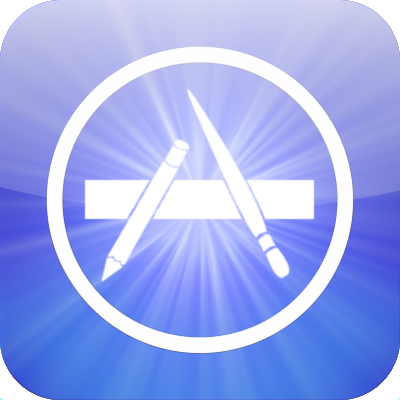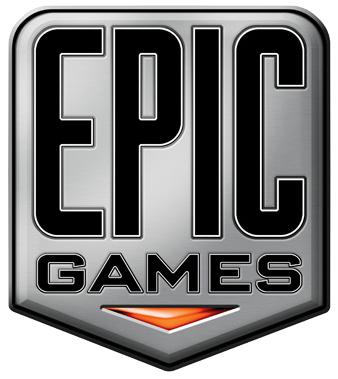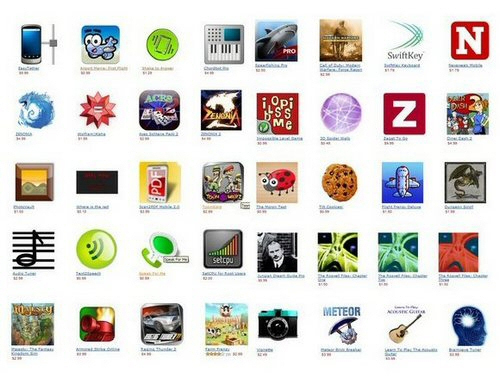分析手机游戏开发引擎及Android系统投放渠道
手机游戏发展的历史呈周期性变化。首次变化是从早期的WAP(游戏邦注:实际上就是基于网络和服务器的游戏。)转变为单机应用。可下载Java和Brew游戏很容易产生利润并且有希望使开发商与消费者直接产生联系,这令行业无比兴奋。然而,各大手机产商随之崛起,他们的产品有着不同的设备类型、屏幕尺寸、固件和其他配件,最终只有大型发行商走出这种分裂性的困境。
开发方式简化
在这种环境下,iPhone和App Store的出现好似雪中送炭。独立开发商此前只能致力于提升游戏玩法的创意性,而无法向公众展示自己的才华。但数年之后,业界还需要应对分裂性的问题。但是,这种分裂已与以往不同。
精良的设备、开发工具和中间件使得大部分名不见经传的工作室开始致力于某些主流手机系统应用的开发。诺基亚与微软签订协议后,手机系统出现iOS、Android和Windows Phone 7三分天下的局面。即便是小型工作室也可以涉猎三星bada OS、奔迈webOS和黑莓QNX等平台。
覆盖所有平台
尽管应用开发难度有所降低,要想成功进行商业运作,关键点在于依靠健全的技术(游戏邦注:如自定义代码或第三方中间件。)提供行之有效的方法,尽可能多地在平台和应用商店上发布游戏。幸运的是,开发商可选择的技术很多。
英国供应商Ideaworks Lab是手机中间件业务方面的行家,其C/C++ Airplay开发环境的发布时间可以追溯到Symbian Series 60、N-Gage、Java和Brew以及原Windows Mobile的年代。工作室可用此制作出独立的二进制码,随后可在不同硬件版本中进行本地运行。数年间,所有智能手机均已采用这种方式,目前支持的系统包括iOS、Android、Windows Phone 7、bada、webOS、QNX和某些过时的平台。而且该方法还用于许多非手机设备,如Mac和PSP。
就近期与法国中间件供应商Stonetrip的合作关系来看,Airplay与其他技术的兼容性也很好。Stonetrip主要关注手机游戏开发,目前其ShiVa3D引擎和编辑器支持iOS、Android、webOS和某些控制器。Airplay和ShiVa3D的结合为工作室提供最广阔的平台支持,使用专业的ShiVA3D视觉编辑器和游戏引擎可以简化开发过程。
其他开发引擎
就发展历史而言,日本公司Hi Corporation与Ideaworks Labs类似。公司的专业3D绘制技术MascotCapsule引擎已嵌入逾6亿部设备中,在日本占主导地位。现在该技术支持iOS和Android,被Capcom和Square Enix等日本工作室广泛用于制作《生化危机4》和《Chaos Rings》等游戏巨作。
Unity Technologies的Unity3d也是手机开发商可选择的主要中间件引擎。这家美国和丹麦合资公司行动迅速,让自己基于PC/Mac背景的引擎增添对iPhone的支持,随后还扩张至iPad和Android。出于这个原因,Unity已成为那些想进行手机应用开发却没有经验的工作室的最佳选择。
Epic虚幻引擎
Epic Games的虚幻引擎3也加入到该行业的竞争中。该引擎被用来制作《战争系列》等AAA级游戏,因而为控制器游戏开发商所熟知,现在它也支持iOS和Android。Epic旗下Chair Entertainment显示出该技术的力量,公司在六个月的时间内开发了iOS顶级游戏《无尽之剑》。而且,Trendy Entertainment在iOS、Android、PC和PlayStation 3发布《地牢守护者》,突出了虚幻引擎的跨平台潜力。
然而,拥有强大的技术支持只是成功运营的必要条件之一,使用第三方工具的商业条款或设计游戏的成本才是决定盈利的关键。因此,对出售手机中间件的公司来说,最重要的问题是如何让许可费用与手机游戏开发的低预算相符。
各引擎费用
Epic决定改变使用虚幻引擎3的商业条款,这便是最佳例证。普通独立开发商协议原先的规定是,开发商可免费下载UDK,如果所制作的游戏销售额超过5000美元,那么需要向公司交付净利润的25%。引擎支持手机系统后,抽成标准提升至5万美元。
尽管同样采用规定抽成标准的方法,Ideaworks Labs使用更为传统的模式。年营业额少于10万的公司可采用独立许可,免费使用iOS系统开发引擎,其他平台的价格为每年每席位99美元。对于营收超过10万美元的公司,需用每年每席位2500美元的专业认证,也可以选择是否追加每年每席位1000美元的专业支持。
Unity产品标准iOS和Android版本的价格是每席位400美元,各平台全功能专业版的售价是每席位1500美元,而且还需要购买价格为每席位1500美元的Unity Pro。
Stonetrip的ShiVa3D定价更为简洁明了,Shiva Editor基础版售价169欧元,高级版的价格为1499欧元。开发商也可以选择额外的培训或支持,也有服务器相关选项供网游开发商选择。
物理引擎行家Havok和引擎供应商Trinigy等更多关注控制器的传统中间件公司将业务扩展至手机领域,这些公司也能通过其诚信的方式赢得开发商的关注。他们根据游戏开发预算按比例收取费用,Havok和Trinigy收取原始预算的10%,这种模式已经在控制器和PC游戏开发商处成功实施。当然,支持需要另外收取费用,如访问资源代码等专业化服务。但对于正在制作游戏的大部分公司而言,这种比例式的收费模式似乎非常合理。
Android系统
尽管技术对手机游戏开发商来说很重要,但绝不是跨平台系统中最重要的部分。随着手机平台的分化,内容出售过程分化得更为迅速。当然,像苹果的iOS和App Store、微软的Window Phone及其Marketplace之类的封闭式平台,它们有自己独立的开发和调度渠道。恰恰是Android中潜藏着巨大的商机。
就这个出自Google之手的开放系统的硬件和应用商店来说,手机制造商、运营商、第三方应用平台、在线零售链和特别兴趣组织都有着自己的展示平台,制定不同的提交、审查和盈利选项。确实,基础APK文件格式使得任何人可以在任何站点上散播Android的内容,只要消费者允许他们的设备接收来自未授权来源的文件。
Android开发商曾于2010年抱怨称,随着免费跨平台商店GetJar和近期Amazon的Android Appstore崛起,使得Android Market失去自己的地位。现在,整个系统好比是某家满是大品牌商店却位于乡下的商场与那些廉价商店展开竞争。然而令人匪夷所思的是,二者的商品完全相同。
第三方的力量
GetJar带来的冲击最大,其每天应用下载量高达15亿次。这为高知名度应用和游戏的发行商及开发商提供了良好的契机,他们可以通过广告、虚拟货币或应用内付费等方式获得营收。《愤怒的小鸟》在Android平台上的发布便是鲜活的例证,Zynga、Digital Chocolate和Glu Mobile等发行商也曾用这种方式让游戏迅速传播。
就长远利益来看,Amazon似乎更值得关注。其Android系统Appstore目前只在美国地区适用,但随后将推向全球。现有的1.3亿客户、结构完善的审批和矫正过程、适用于Free Every Day促销的Paid App等消费者推广功能、推荐机制和指导应用打折的能力,这些都预示着其有实力撼动整个Android应用销售过程。开发商也可以考虑更多的渠道。RIM已宣称将在PlayBook平板电脑上的BlackBerry App World中运行自己的Android商店,尽管设备本体QNX OS的支持最初将通过Unity的Union集合游戏服务来提供。
正因为市场的混乱,有些开发商开始怀念2008年7月前的岁月,当时世界上只有一个App Store。当然,如果不出现其他系统,手机游戏业务照样也能正常运转。(本文为游戏邦/gamerboom.com编译,转载请注明来源:游戏邦)
Executive briefing: Cross platform mobile game development
The history of mobile game development has been nothing if not cyclic. From the early days of WAP – effectively web and server-based games – the first switch was to standalone apps. Downloadable Java and Brew titles excited the industry thanks to their ease of monetisation and the promise of a direct relationship with the consumer. Yet it was the success of mobile handset manufacturers to differentiate their products with hundreds of different device types, screen size, firmware and other extensions that created the fragmentation which eventually killed the business for all but the largest publishers.
A singular approach
In that context, the arrival of iPhone and the App Store was a breath of fresh air to a drowning man for the independents who, once again, could focus on gameplay creativity, not porting prowess. But fastforward a couple of years, and we’re back dealing with fragmentation. At least, this is a different kind of fragmentation.
The power of the devices, as well as the quality of development tools and middleware, means that all but the most reticent studios (or Apple fanboys) are now committed to working across some of the main mobile formats, which following Nokia’s agreement with Microsoft means iOS; Android and Windows Phone 7. You don’t have to be large studio to further extend your horizons to cover some or all of the likes of Samsung’s bada OS, Palm’s webOS and RIM’s QNX.
Covering all bases
When it comes to running a successful business however, what’s key is the ability to rely on robust technology – either custom coded or third party middleware – to provide an efficient way of releasing a title across as many platforms and app stores as possible. Thankfully, there are plenty of choice.
UK provider Ideaworks Lab is a veteran of the mobile middleware business; its C/C++ Airplay development environment launched back in the days of Symbian Series 60, N-Gage, Java and Brew and the original Windows Mobile. It enables studios to create a single binary, which is then deployed natively across different hardware versions. Over the years, it’s been expanded to cover all smartphones, with the current support list including iOS, Android, Windows Phone 7, bada, webOS, QNX, and legacy platforms as well as non-mobile devices such as Mac and PSP.
Airplay also plays well with other technology as shown by the recent partnership with French middleware outfit Stonetrip. Its heritage is mobile game development, and its ShiVa3D engine and editor now supports iOS, Android and webOS, as well as PC and some consoles. Integration between Airplay and ShiVa3D provides studios with the widest platform support as well as use of dedicated ShiVA3D’s visual editor and game engine to simplify the development process.
Spectrum of flavours
Similar to Ideaworks Labs in terms of its history is Japanese company Hi Corporation. Its MascotCapsule engine, which is a specialist 3D rendering technology, has been embedded in over 600 million devices, the vast majority in Japan. Now available for iOS and Android, it’s heavily used by Japanese studios such as Capcom and Square Enix in high profile titles such as Resident Evil 4 and Chaos Rings.
Another major middleware engine for mobile developer is Unity Technologies’ Unity3d. Coming from a PC/Mac and web background, the US/Danish company was quick to add support for iPhone; something it’s since extended with support for iPad and Android. For that reason, Unity’s been a particular popular choice for studios who want to get into mobile development but don’t have experience of the sector.
Epic choice
Adding to the competition is Epic Games’ Unreal Engine 3. Well known among console developers thanks to its use on triple-A games such as the Gears of War series, it now supports iOS and Android. It was the Epic-owned Chair Entertainment that demonstrated the power of the technology, developing iOS top grossing game Infinity Blade in six months. Similarly, Trendy Entertainment has underlined Unreal’s cross platform potential, releasing Dungeon Defenders for iOS, Android, PC and PlayStation 3.
Yet, having a strong technology base is only one of the requirements for growing a successful business. The commercial terms of using third party tools, or the cost of building your own, are key to profit. Hence, one of the most significant issues for companies selling mobile middleware is how they adapt their general licensing to match the much smaller budgets of mobile games.
What’s in your wallet?
One example was Epic’s decision to tweak the commercial terms for using Unreal Engine 3. Original announced under its usual indie developer agreement as a free download of the UDK with a revenue share of 25 percent of net revenues for sales of any game over $5,000, this ceiling has since been raised to $50,000.
Ideaworks Labs uses a more traditional model, albeit with a revenue ceiling. Companies with an annual turnover of less than $100,000 fall into its Indie licence, which is free for iOS development and costs $99 per seat per year for other platforms. For companies with revenues more than $100,000, the Pro licence is $2,500 per seat per year with the option of Pro support for $1,000 per seat per year.
As for Unity, it’s available priced $400 per seat each for the standard iOS and Android versions, while the fully featured Pro versions for each platform cost $1,500 each per seat, also requiring the purchase of Unity Pro, which costs $1,500 per seat.
Stonetrip’s ShiVa3D offers the most straightforward arrangement. Shiva Editor costs €169 for the Basic version and €1,499 for the Advanced version. Additional training or support options are also available, as is a Server option for online games.
Yet as more traditional console-focus middleware companies such as physics specialist Havok and engine outfit Trinigy extend their business to mobile, an honesty box approach is one that’s also gaining popularity. This makes the licensing fee proportional to the game development budget, with 10 percent of the original budget the level used by both Havok and Trinigy, which has successfully used this model for its console and PC clients. Of course, support is an additional charge, as are specialist services such as access to source code. But as way of dealing with the large range of companies now making games, the shift from absolute to proportion seems eminently sensible.
My store, your store, lotta stores
Important as it is, technology isn’t the most important part of the cross platform ecosystem for mobile game developers however. Even as mobile platforms have fragmented, the process of selling content has fragmented faster. Of course, closed platforms such as Apple’s iOS and App Store combination, matched by Microsoft’s Window Phone and its Marketplace, are resolute affairs, with their own singular development and deployment channels. The fly in the ointment, or huge business opportunity – depending on your point of view – is Android.
Created by Google as an open system in terms of hardware and app stores, everyone from handset manufacturers, carriers, third party content aggregators, online retail chains and specialist interest niches (notably porn sites) are launching their own shopfronts, each with different submission, approval and monetisation options. Indeed, using the basic APK file format, anyone can distribute Android content from any website, as long as consumers have enabled their device to accept files from unauthorised sources.
In a case of being careful what you wish for, Android developers’ 2010 complaint that the Android Market was more like a jumble sale has been trumped with the rise of free cross platform store GetJar and, most recently, by Amazon’s Appstore for Android. Now, the ecosystem is more like an out of town mall with big name shops nestling against dime stores, and the occasional panhandler. Confusingly though, they all contain similar content.
Third party power
GetJar has had the most impact. Its reach – 1.5 billion downloads to-date – is such that it provides a great opportunity for publishers and developers with high profile apps and games they can monetise through methods such as advertising, virtual currency or in-app purchases. Examples include the launch of Angry Birds for Android, while publishers such as Zynga, Digital Chocolate and Glu Mobile have used it to get back catalog titles distributed as fast as possible. Perhaps more significant in the longrun is Amazon. Its Appstore for Android is only currently available in the US, but will roll out globally over time. And it’s the store’s 130 million existing customers combined with its structured curation and approval process, and consumer features such as its Paid App for Free Every Day promotion, recommendation engine and ability to actively cut the prices of apps, that suggest it can shake up the Android sales process.
There will be plenty more channels for developers to think about too. RIM has announced it will running its own Android store within BlackBerry App World for its PlayBook tablet, while support for the device’s native QNX OS will be provided initially via Unity’s Union aggregation game service.
No wonder some developers are already thinking back to the halycon days of July 2008 and that one App Store world. Still, if nothing else, the mobile games business always goes around… (Source: Pocket Gamer)











































 闽公网安备35020302001549号
闽公网安备35020302001549号